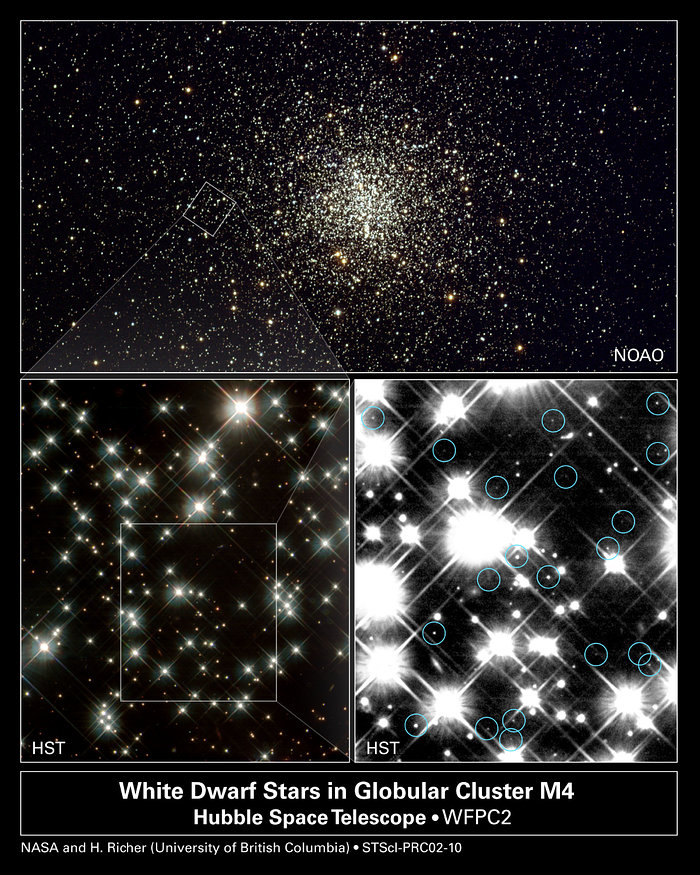Universal Clocks
Pushing the limits of its powerful vision, the NASA/ESA Hubble Space Telescope has uncovered the oldest burned-out stars in our Milky Way Galaxy. These extremely old, dim stars provide a completely independent reading of the universe's age without relying on measurements of the universe's expansion.
The ancient white dwarf stars, as seen by Hubble, turn out to be 12 to 13 billion years old. Because earlier Hubble observations show that the first stars formed less than 1 billion years after the universe's birth in the big bang, finding the oldest stars puts astronomers well within arm's reach of calculating the absolute age of the universe.
Credit:About the Image
About the Object
| Name: | M 4, Messier 4, NGC 6121 |
| Type: | Milky Way : Star : Grouping : Cluster : Globular |
| Distance: | 5500 light years |
| Category: | Cosmology Star Clusters |
Colours & filters
| Band | Wavelength | Telescope |
|---|---|---|
| Ultraviolet U | 336 nm |
Hubble Space Telescope
WFPC2 |
| Optical V | 555 nm |
Hubble Space Telescope
WFPC2 |
| Infrared I | 814 nm |
Hubble Space Telescope
WFPC2 |
Notes: The bottom two images were captured by the Hubble Space Telescope. The top image was capture by the Kitt Peak National Observatory's 0.9-meter telescope in March 1995.
